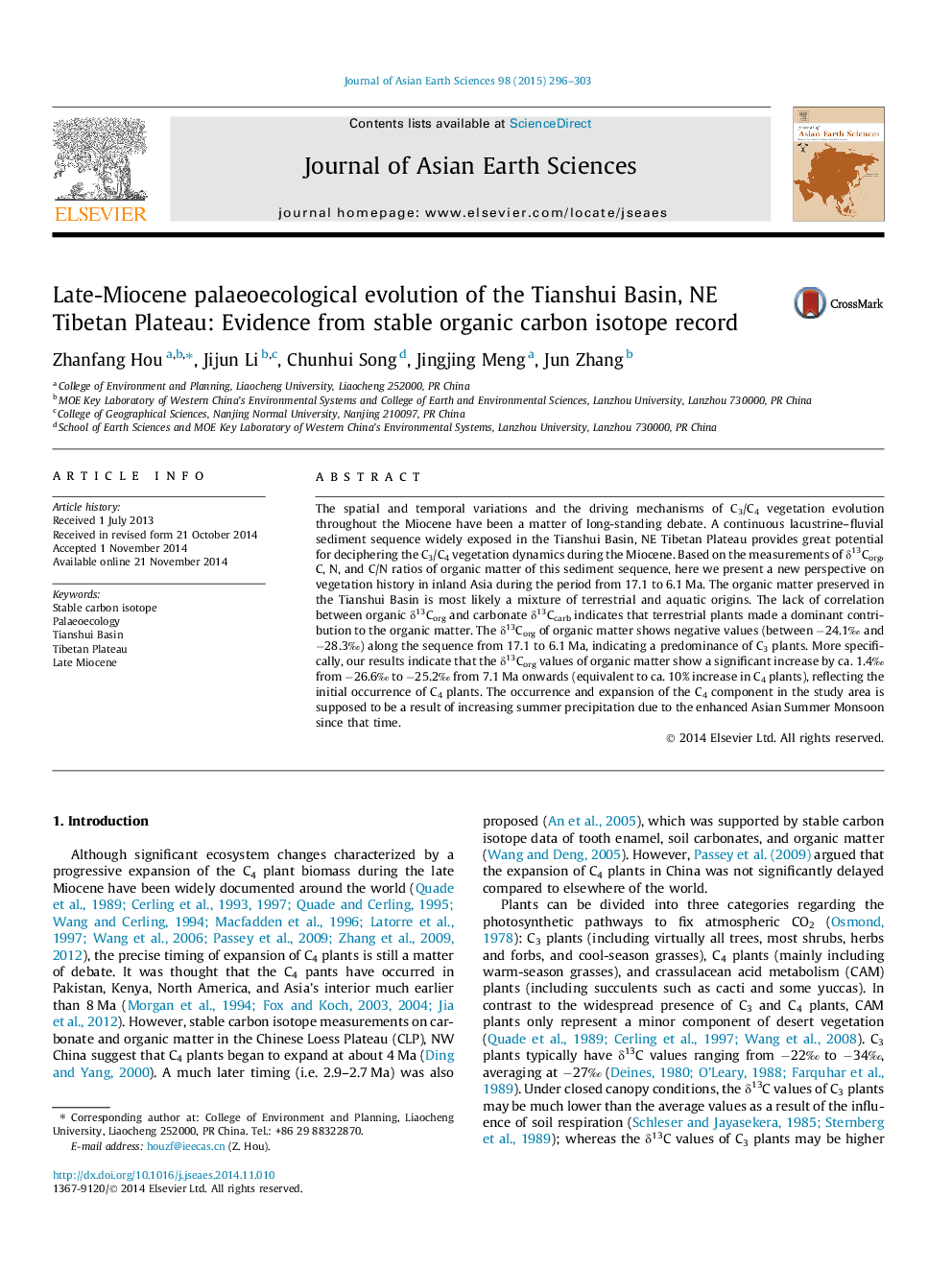| Article ID | Journal | Published Year | Pages | File Type |
|---|---|---|---|---|
| 6444386 | Journal of Asian Earth Sciences | 2015 | 8 Pages |
Abstract
The spatial and temporal variations and the driving mechanisms of C3/C4 vegetation evolution throughout the Miocene have been a matter of long-standing debate. A continuous lacustrine-fluvial sediment sequence widely exposed in the Tianshui Basin, NE Tibetan Plateau provides great potential for deciphering the C3/C4 vegetation dynamics during the Miocene. Based on the measurements of δ13Corg, C, N, and C/N ratios of organic matter of this sediment sequence, here we present a new perspective on vegetation history in inland Asia during the period from 17.1 to 6.1 Ma. The organic matter preserved in the Tianshui Basin is most likely a mixture of terrestrial and aquatic origins. The lack of correlation between organic δ13Corg and carbonate δ13Ccarb indicates that terrestrial plants made a dominant contribution to the organic matter. The δ13Corg of organic matter shows negative values (between â24.1â° and â28.3â°) along the sequence from 17.1 to 6.1 Ma, indicating a predominance of C3 plants. More specifically, our results indicate that the δ13Corg values of organic matter show a significant increase by ca. 1.4â° from â26.6â° to â25.2â° from 7.1 Ma onwards (equivalent to ca. 10% increase in C4 plants), reflecting the initial occurrence of C4 plants. The occurrence and expansion of the C4 component in the study area is supposed to be a result of increasing summer precipitation due to the enhanced Asian Summer Monsoon since that time.
Related Topics
Physical Sciences and Engineering
Earth and Planetary Sciences
Geology
Authors
Zhanfang Hou, Jijun Li, Chunhui Song, Jingjing Meng, Jun Zhang,
